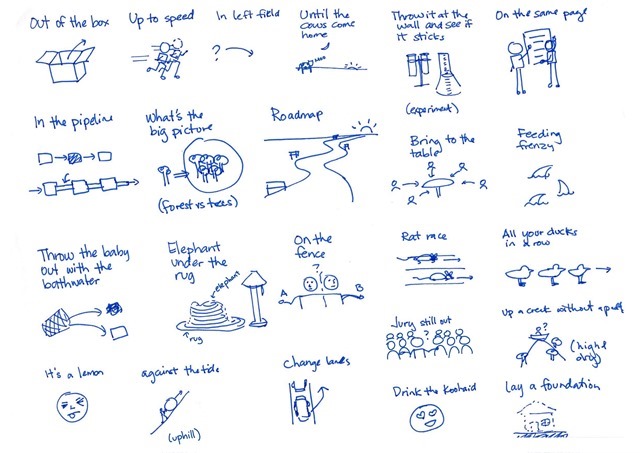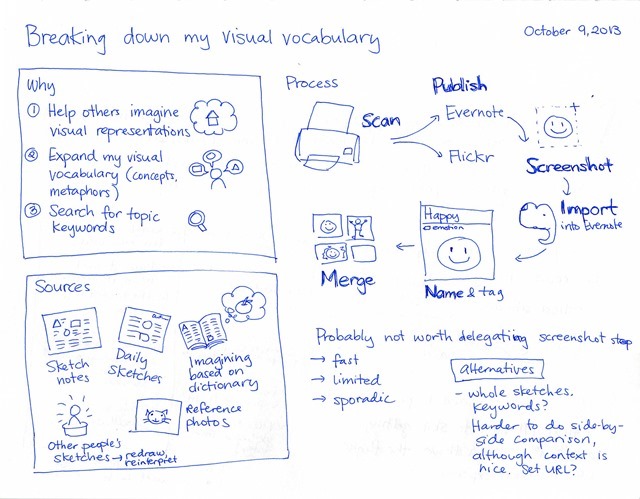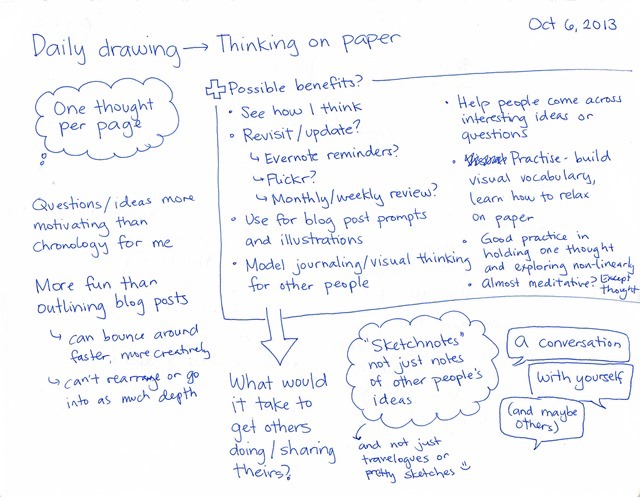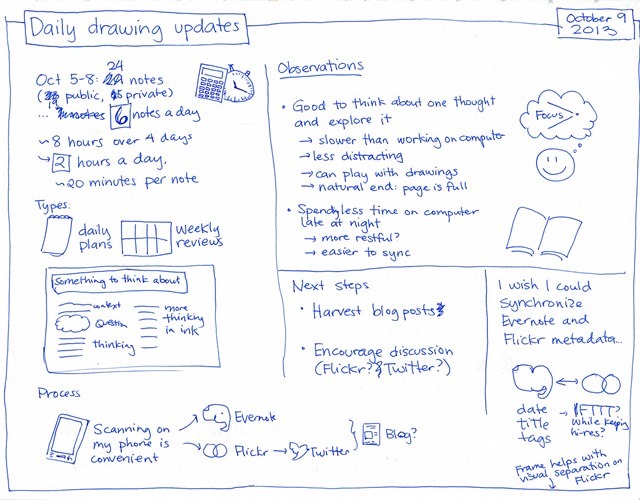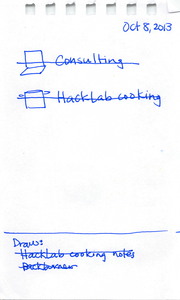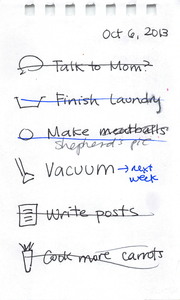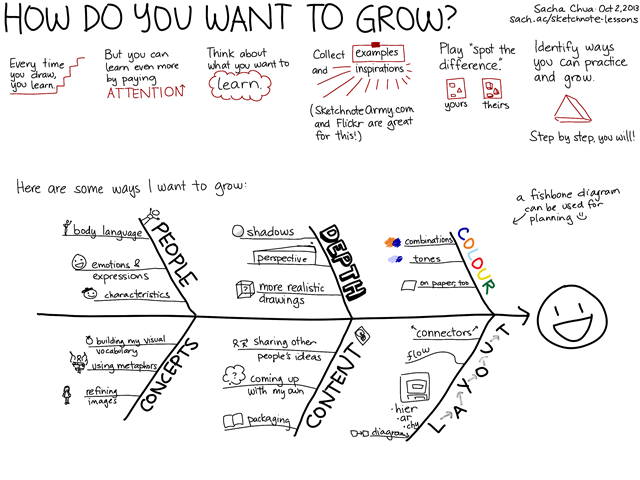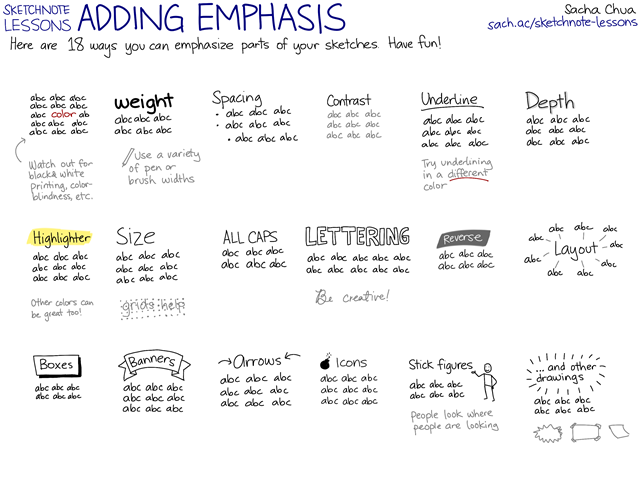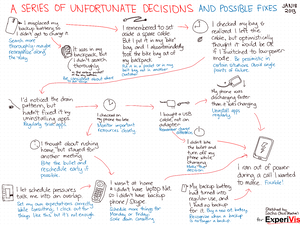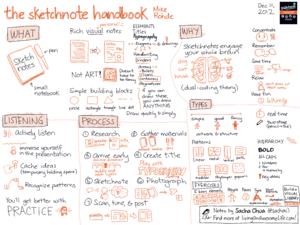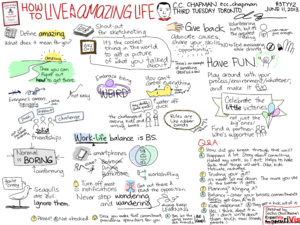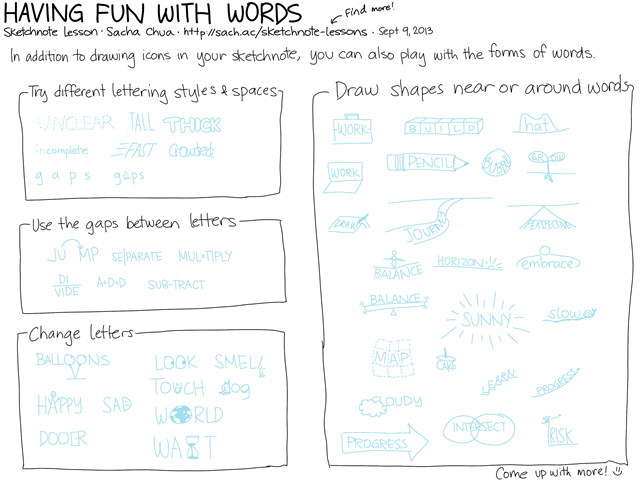Color is a great way to add visual interest and guide people’s eyes to what you want them to focus on. Here’s Kevin Dulle’s sketchnote lesson on adding emphasis with shadows and color:
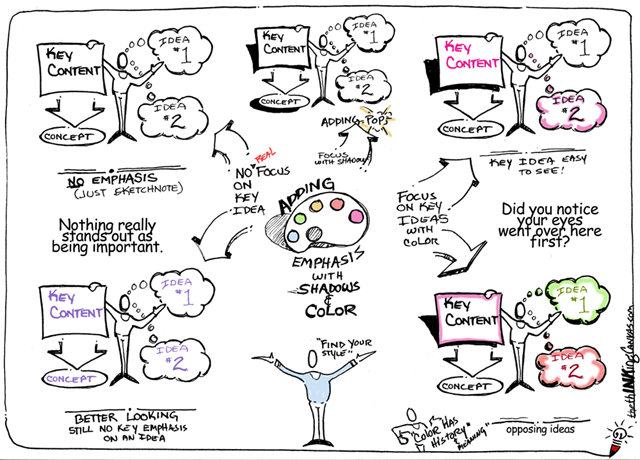
Reposted with permission – check out his blog for more tips!
If you’re starting out with sketchnotes, you don’t have to use color right away. Go ahead and draw with whatever you feel comfortable with, whether that’s a black technical pen, a 4-color ballpen, or a digital stylus.
You can always add color afterwards. On paper, you can use crayons, colored pencils, highlighters, markers, and so on. Make sure you test it in an inconspicuous area (maybe on a separate piece of paper) because your coloring method may interact badly with your drawing.
You can also add color on the computer. I prefer this way because then I can easily change my mind about what colors to use. Erasing is easier. Learn how to use the software tools that are out there. Here is a quick video I put together on how to use the free GIMP tool to add color by either replacing the ink that’s there (as if you changed pens) or adding color on top (as if you used a highlighter).
Okay, so that takes care of the mechanics. What about the styles?
Develop your personal style by looking for inspiration and experimenting with ideas. In addition to checking out people’s sketchnotes, look elsewhere for interesting color combinations: nature, art, product designs, and so on. Try different techniques and colors.
Here’s a sampler of different coloring styles I’ve played with in my sketchnotes:
Sketchnote Army has a wide variety of sketchnoting styles. Flip through it, see what you like, and try playing around with those ideas. Have fun!
Like this? Check out the other sketchnote lessons and learn more. Feel free to suggest topics, ask questions, or share your own tips!

